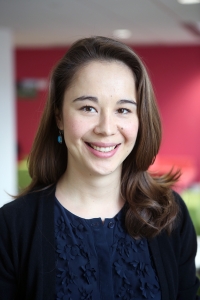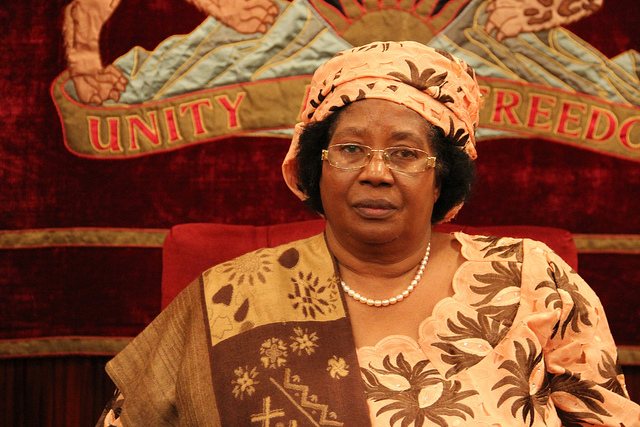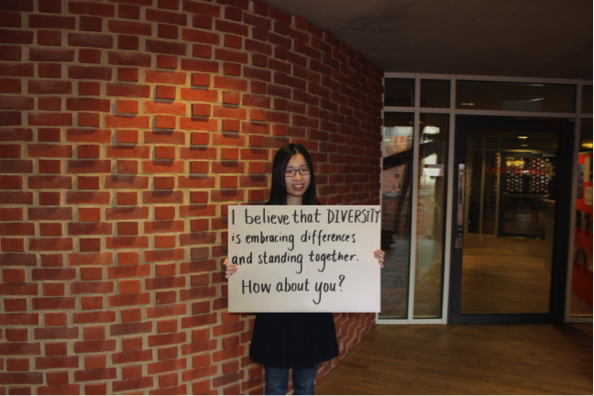 As part of Women’s History Month at LSE, Aiko Holvikivi – an LSE PhD researcher at the Gender Institute – spoke with Paroj Banerjee – an LSE PhD researcher in the Department of Geography and Environment and member of LSE’s Equity, Diversity and Inclusion (EDI) team – about gender mainstreaming, researching gender and the military, and avoiding focusing solely on material considerations at the expense of knowledge and experiences.
As part of Women’s History Month at LSE, Aiko Holvikivi – an LSE PhD researcher at the Gender Institute – spoke with Paroj Banerjee – an LSE PhD researcher in the Department of Geography and Environment and member of LSE’s Equity, Diversity and Inclusion (EDI) team – about gender mainstreaming, researching gender and the military, and avoiding focusing solely on material considerations at the expense of knowledge and experiences.
Paroj Banerjee: I noticed that your PhD topic is on gender training for uniformed personnel and in the past your interests seem to have been closely linked to gender and the military. Could you tell us a bit about your interests in gender and your motivation for choosing your PhD topic?
Aiko Holvikivi: For me the story starts with an ‘aha’ moment when I discovered gender. Even though I have always identified as a feminist, and thought that gender is important, I studied international relations and political science without having much exposure to gender as a field of academic enquiry. And then in my Master’s in Geneva I took a class on feminist theories and there was this one fact when I realised while going through the readings that, in a natural disaster women, are more likely to be killed by a significant amount. And for me that was the most revealing aspect about unequal opportunity … that’s when I realised and then I started seeing it everywhere – seeing that there is a gender aspect in everything. I wanted to pursue that. I was really lucky because after my Master’s I got a job at an NGO called DCAF (the Geneva Centre for the Democratic Control of Armed Forces) where I was able to combine my training in political science with my interest in gender. I worked in the gender and security team at DCAF, which worked on gender and security sector reform issues. This meant that I did a lot of capacity building and gender training with various security sector institutions, such as the military and peacekeeping personnel. And as I was working there I got more and more curious about what exactly do we think gender is and what does it do in this context. Also how – or indeed, whether – can this kind of gender mainstreaming and gender work create more just and inclusive institutions and practices? My motivation is that – after four and a half years at DCAF I felt that I need to take the time to think though these questions.
Paroj: Yes, I think PhD gives you that scope to reflect on some of these questions. It is interesting you mention natural disasters, because in my experience I have seen that the reconstruction is also very gendered. What do you think is the difference between the terms ‘equity’ and ‘equality’ with respect to gender?
Aiko: I thought that was interesting because I know there is this distinction made between equality and equity, the same way a distinction is made between equality and sameness, so while I tend to use the word ‘equality’, I think we are getting at the same core issue of needing to problematise the idea that treating everybody the same is the goal. Just because it’s the same for everybody does not mean it is the same for everybody. I used to try to get the point across when we did training with military people by giving the example that we are all different and we all get different treatment anyway, in the sense that, the example I would give, if I am in charge of logistics I ordered boots for everybody and I order them all in the size 45, it’s treating everybody the same but it’s not treating them equally because we have diverse needs. But that being said when I looked at this question and started thinking about it, I came up with two cautions as well in ways that we need to think about equity. In that sense the focus is very material; it’s about getting things and getting opportunities. And that’s why we need to use the word equality because we need to get to the aspect of equal valuing of perspectives, equal valuing of the knowledge and experiences of diverse groups of people and it’s about freedom to express your gender in the way that you want to. So I feel we need to not focus only on material things. And also, I am not sure where the connotation comes from, but especially when we talk about equity I feel like there is a danger there in putting too much emphasis on the individual and differences between individuals, and that can lead to the mentality of ‘oh, women have all these issues and special needs so they need extra support and extra help’ at the expense of looking at the kind of discriminatory structures that lead to the different experience. There is a great blogpost on LinkedIn by Aasha Abdill who talks about exactly this. Have you seen this photo that is circulated on equity and equality with the people behind the fence and the number of boxes? And Aasha kind of brings up the fact that in certain ways it feeds implicit bias, that some people are less abled or have certain limitations and hence and they need extra help. As opposed to, if we look at structures maybe we need to make the fence different heights at different places and so on to shift from the feeling that certain people inherently need more help to looking at how structures might disadvantage them.
Paroj: Yes, I agree to a great extent about that. It’s about, like you said, material, but also about the opportunities you get to access that material. It also has cultural connotations. So with this I will come to your interactions within the school. How could you comment about the overall gender sensitivity around campus? In your everyday interactions at the School, how do you feel that questions of gender feature?
Aiko: Just to preface this, also linking the previous one, I thought your questions were really good because where the focus was on gender there was this broad idea (as we talked on our emails) on intersectionality and how these things – I look at through the lens of gender – it’s impossible to understand them without paying attention to different aspects of diversity. What first came to mind when I read the question was the visual of LSE and your experiences on that, especially after having being to the library on the top floor of Old Building, the Shaw Library, where you go and you see lot of portraits of old white men. Not that I have anything against old white men, it’s just that they are pretty much the majority and that they take up a lot of space – they are overrepresented. And then you look around and see the new things put up by the LSE social media and then look at the student body which is much more diverse and colourful. I find the contemporary visual at LSE very inviting in that sense. It looks very vibrant. It feels easy to fit in. My everyday interactions are probably unique because I spend a lot of time at the Gender Institute. So I don’t know how I can speak for the rest of it. But some of the practical things that I have come across in my everyday experience that I have colleagues who are parents, so that there are certain challenges that we are working on in terms of the debate on the LSE nursery at the moment – or sometimes the scheduling of events, many of which start post-6.30pm, which is a difficult time for people. So this is never quite resolved. And the other issue, and I guess that’s the thing in a city with old buildings, but I am noticing how some of the building is not accessible by wheelchair. And I guess that’s the case with a lot of departments. So yes there are my reflections from the big picture to practical things.
Paroj: So coming back to your interactions as a student, we had a discussion regarding the academic content and you said because your interactions are limited to the Gender Institute you would want to answer the question differently. So if I were to rephrase the questions in terms of the importance of integrating the gender component in academic content?
Aiko: Exactly, in my old job we used to work a lot on institutional reform and I think there is a great danger – especially at an institution like the LSE – that has great structures for gender knowledge – such as the Gender Institute, EDI, the Centre for Women, Peace and Security – there is a temptation to leave gender inequality questions with ‘the experts’ and for the rest of the institution to assume that gender or diversity questions are dealt with because these great structures exist. But, and relating to the point where I said that gender and its dynamics are present in pretty much in everything, when you look at curricula, gender is already there, whether or not it is explicitly mentioned. Whether or not you think you are teaching gender, you are teaching gender. And other axes of difference, that, as far as I understood it, was the message behind the campaign ‘Why is my curriculum so white?’, so you might not have anything specifically on gender, race, sexuality or disability in your curriculum and that in and of itself is sending a message. Or, for instance, if you don’t have any female authors or authors of colour in your syllabus, that is also sending a very strong message. And I think it goes beyond the curricula as well in terms of awareness to pedagogical strategies, classroom practices… there is a fascinating experiment on research that’s done on who speaks in a classroom setting, for how long and who is perceived to have spoken for long. So a friend of mine referred to me to a study where they were forced to teach men and women equal speaking time. And according to everybody’s perception in the classroom, the women had dominated the conversation – that is they were speaking for half the time. So that’s a long way of saying that I don’t think we can afford to leave gender to the gender theorists. And it needs to be taken into account in our academic curricula.
Paroj: With that in mind I will steer towards the questions of academics and the representation of women in employment in higher education. Do you think women are adequately represented in employment in higher education?
Aiko: There is an interesting value question in there as well in terms of what’s ‘adequate’ representation! But yes you inspired me again to have a look at the statistics. I’m sure the EDI would have better statistics. The higher education statistics agency show that in UK universities, women make up 56 per cent of students, 45 per cent of staff, 34 per cent of senior staff and 23 per cent of professors. So we see this triangular structure which holds true across a lot of contexts. I have come in the past work by Virginia Valian, who works at Hunter College New York, and she has written a book called Why So slow? The Advancement of Women which is about women in academia. Here she tracks women in the US where she has looked at women and cohorts of female academics. She has drawn together a lot of studies to show that women progress slower in academic careers and there is a need to kind of… I’d be curious to hear what your thoughts are and what your plans are on those to interrogate why that is. And there is a lot of experimental research that shows… you know what takes us back to the structure… the discriminatory structures and the overall accumulated advantage in the favour of both in certain demographics. I think it’s really important to address that for two reasons. One is what Professor Anne Phillips terms as the politics of presence and that we need to have a diverse set of people in academia – we need more women, but we also need to represent people from across the continua of gender, race, ability, etc.… it takes me back to the visual that if we need a diverse student body students should be able to see themselves in the staff and role models. Further, research shows that unconscious bias means that it’s not so much that we discriminate against people who are different from us, as the fact that we tend to favour people who are similar to us which is why we get an over-representation of certain groups. But in terms of the curricula I also think that it’s not just that we need diverse bodies; we also need a diversity of ideas and knowledge practices. Standpoint feminism tells us that we need to listen to voices that have been marginalised. Ensuring a diversity of voices, experiences and knowledge practices makes for better knowledge and better social and scientific inquiry. Therefore, there are different kinds of academic backgrounds that enrich our intellectual culture.
Paroj: So coming back to LSE, is there an LSE woman – whether from the past or the present – who has inspired you? What would you say about the importance of inspiring role models for women at the School?
Aiko: Absolutely, it makes a huge difference to be able to identify and see yourself in the people who you take inspiration from. And, like I said, my research facility also tends to have better access to people who are more similar to myself. For me, I split my time between the Gender Institute and the growing Centre for Women, Peace and Security. Therefore, it’s really hard to name one person because I feel like I am surrounded by inspirational women all the time and every day. The Gender Institute is unique for what it does and its size, and we are at a time where gender and women’s studies programmes feel like they are under existential threat and are being shut down for a few reasons across many institutions. But the Gender Institute is a place that has managed to grow this big research programme that manages to forward feminist knowledge because we come from a whole variety of disciplinary backgrounds and finding ways to speak across those. I think in everyday interactions as well what inspires me is the way that those feminist politics are put into practice through pedagogy, through how our faculty relate to students, the informal mentoring and support that goes on. That’s especially the case with my interactions with my supervisor Professor Marsha Henry. One of the reasons I applied here because I was inspired by her work and I have really enjoyed working with her.
Paroj: Finally, as we draw close the interactions – which were very enlightening – I would like to ask, how do you think LSE can strive towards becoming a more gender-sensitive institution? Do you have any tips for the students here?
Aiko: Tips for the students is… on one hand, we have a fairly diverse student body and then we have these issues associated with curricula. And I think to really take advantage of each other’s presence so that we are not just diverse in backgrounds but then get funnelled through the system to think in the same way, but to bring to the table and try and benefit from each other’s lived experiences and to take those seriously as a place of knowing. And I want to recognise all the work that’s being done in making the institution more gender-sensitive and more diverse and more inclusive, but we also need to recognise that it’s slow work, that we are never going to be ‘done’ and that we should not become complacent. When I heard Virginia Valian speak, she concluded with a quote from an Irish lawyer that said that ‘The price of liberty is eternal vigilance.’ I think that it’s a good message to take away that we are never finished.
Find out more about LSE Women: making history #LSEwomen






